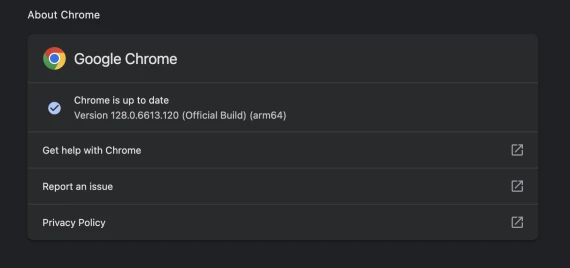Defending Against Remote Code Execution in Google Chrome: A Critical Update

Google Chrome, a widely used web browser, serves millions of internet users by connecting them to the online world. Unfortunately, severe vulnerabilities can occur that threaten the security of its users.
One recently discovered Chrome vulnerability in versions prior to 128.0.6613.119 allows remote attackers to gain control of a victim's machine by running arbitrary code that executes on their behalf, steal sensitive information, install malware or ransomware, and even obtain unauthorized entry to systems. As a result, this flaw poses a grave threat to users' privacy and security. Let's discuss this vulnerability and who it affects, as well as measures you can take to secure against it.
Understanding This Chrome Vulnerability
 The Google Chrome vulnerability in question, CVE-2024-8362, refers to a flaw that allows remote attackers to execute arbitrary code on an affected machine, particularly using JavaScript engine V8 as the vector for attack. By exploiting this flaw, attackers could create or embed malicious websites that exploit this bug and trigger the execution of harmful code on users' devices.
The Google Chrome vulnerability in question, CVE-2024-8362, refers to a flaw that allows remote attackers to execute arbitrary code on an affected machine, particularly using JavaScript engine V8 as the vector for attack. By exploiting this flaw, attackers could create or embed malicious websites that exploit this bug and trigger the execution of harmful code on users' devices.
Since this vulnerability involves the Google Chrome browser, millions of users across platforms—Windows, macOS, Linux, and Android—could be at risk. Given the severity of potential consequences for these millions of Chrome users worldwide, all Chrome users must immediately take steps to protect themselves and their accounts. We'll discuss these countermeasures in more detail below.
Fixes and Countermeasures
 Chrome Security Update (Source: CyberSecurity News)Google has taken swift steps to address this vulnerability by issuing security updates. Users should update their Chrome browsers with the most up-to-date version, 130.0.6695.0, to protect themselves. At the same time, administrators and IT professionals must safeguard devices on their networks by adhering to best practices.
Chrome Security Update (Source: CyberSecurity News)Google has taken swift steps to address this vulnerability by issuing security updates. Users should update their Chrome browsers with the most up-to-date version, 130.0.6695.0, to protect themselves. At the same time, administrators and IT professionals must safeguard devices on their networks by adhering to best practices.
Here are the steps administrators should take to defend against this vulnerability and similar threats:
- Prioritize Patch Deployment: Admins must prioritize installing Chrome updates as soon as they become available to ensure all Chrome devices possess essential security patches.
- Centralized Management: For organizations with multiple devices, centralized management tools such as Google Workspace can simplify updating and managing Chrome installations. Administrators can define policies to enforce automatic updates to reduce risks to vulnerable devices.
- User Education: Administrators should inform their users about the importance of updating their browsers regularly and the potential dangers of delaying these updates, emphasizing quick action toward security in your organization. Doing this will foster an environment focused on security awareness.
- Security Awareness Training: Regular security awareness programs can help users recognize suspicious websites, phishing attempts, and potential malware threats more quickly, reducing the risk of falling prey to attacks that exploit this vulnerability.
Our Final Thoughts on This Severe Chrome Bug
This Google Chrome vulnerability that allows attackers to remotely execute code poses a grave danger for millions of users worldwide, potentially leading to unauthorized access, data theft, and malware infections. Thankfully, however, Google has released updates that address this flaw, and users, particularly admins, should upgrade Chrome immediately to minimize risks and protect themselves against potential harm. Proactive vigilance and timely updates are integral to maintaining a safe browsing environment.


















